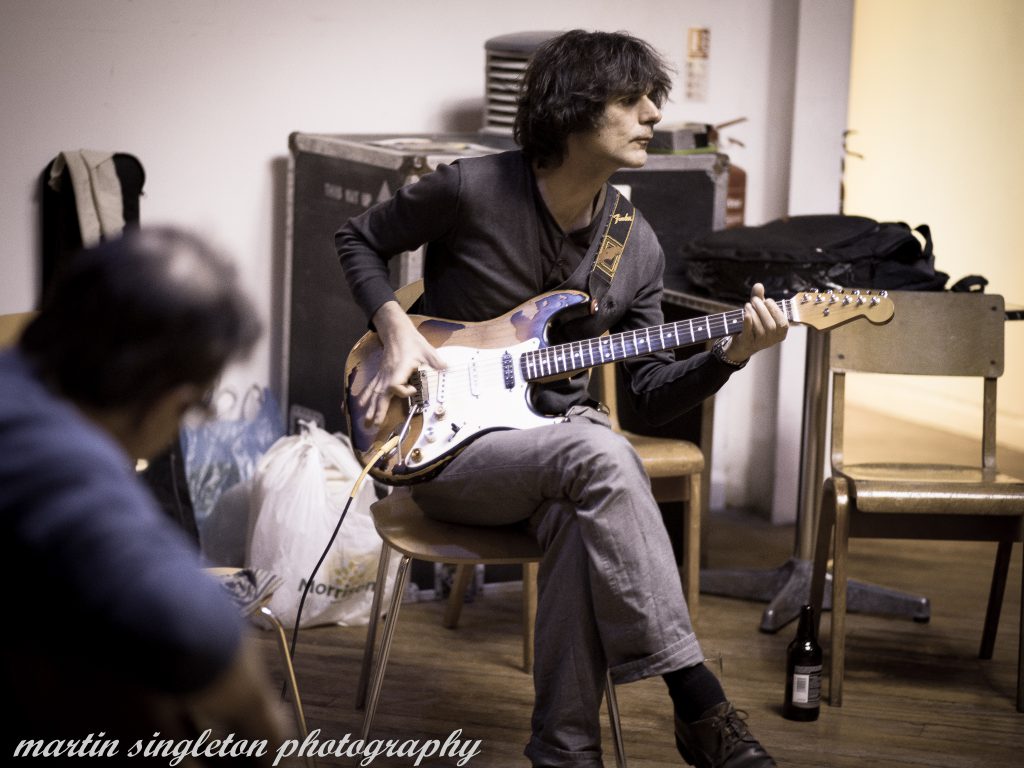
For this article a brief explanation what stringbending is all about and how you can apply its sound to your own guitarplaying.
On the guitar you can play chords or single strings. You can play open strings or fretted notes. Fretted notes are being played by fingering a fret on the fretboard with a finger of your left hand. The fretted string will respond directly by making the note heard. When you bend a string the sound is different, less direct, compared to playing a fretted note: The pitch of the fretted note is altered by pushing up the string. The pitch can be bend up one fret, two frets or even half a fret, all depending on on how far you bend the string! Stringbending can give you the idea you are playing with a slide without actually using one!
Which Fingers To Use?
A common technique to bend a string on the guitar is using your ringfinger of your fretting hand. The ringfinger is doing the actual stringpushing while your index-and middle finger support your ringfinger: The actual technique works as follows: Place your ringfinger on a fret somewhere on, for example, the B string. Place index-and middle finger directly behind ringfinger on the same string.
Using this stringbending method you will notice it will give your ringfinger more strenth, power and stability to push the string to create the correct pitch.
Correct Your Pitch
Anyone new to stringbending will experience difficulty bending the string up to the right pitch. A simple way to check your pitch is to bend one fret up from your fingered, fretted, note. After you bend the string, play the actual bended note. This will result in the actual note being played twice: First you will hear your bended version, then the fretted version of the note. If your fretted note is lower compared to the bended note, you know you will need to bend the string a little further to get the correct pitch.
Where on Fretboard?
Stringbending will be easier in higher positions on the fretboard. The fifth position seems to be a common position for most guitar players. The fifth position gives also easy access to the key of A minor, a common key for most Blues and Rock songs. It may be a good place to start when you are new to stringbending.
It is possible to bend on any string of the guitar, anywhere on the fretboard. All you need to do is to work on the strength of your ring finger to bend the strings in various positions. Experiment to see where you like its sound the best.
Which String?
Any string can be bend! Plain strings have more resonance because of their nature: They are thinner and sound brighter compared to wound strings.
Beginners may find stringbending easier on plain strings because they are thinner and have less resistance, but wound strings can certainly be bend too! They will sound different and will take a little more effort, just try it!
Application
Now you know how to bend a string it is time to apply your new technique.
A common way to use stringbending is play a phrase and bend into a particular note of that phrase, instead of fretting this note. This method is used by a lot of Blues guitarplayers. Listening to various players who use stringbending will give you a good idea what is possible.
Is stringbending only used in Blues? No, altering the pitch of your strings can be used in any style of music. It is a technique which is also often used in Eastern styles of music such as Indian music. Basically the technique of stringbending will offer the guitarist a different sound. This sound can be used in any form of guitarplaying, all depending on your own style and taste.
p.s: for the video underneath I use standard D tuning which is (from low to high): D, G, C, F, A and D
Did you enjoy the lesson? Why not subscribe to the channel? Please do not forget to like and share the video. Thanks!!
Eddie

